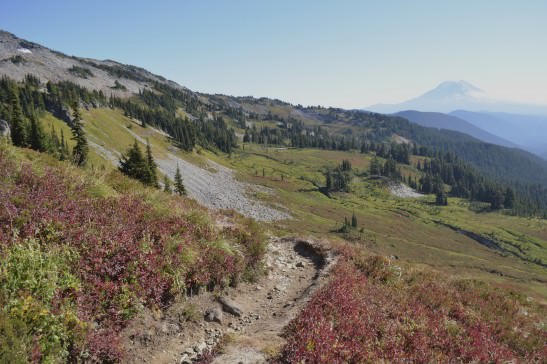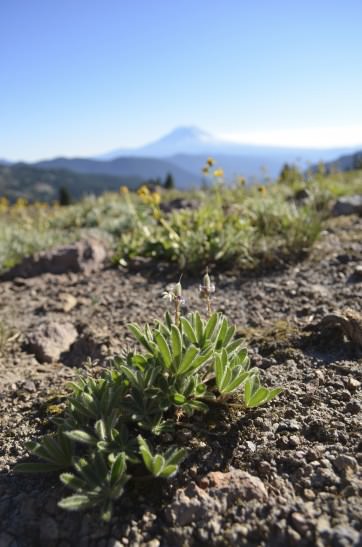Mount Adams photo-bombed almost every picture I tried to take during my hike in the Goat Rocks a few weekends ago. I couldn't snap a photo of scree fields, glacial lakes, moss-covered trees — anything — without the 12,200-foot mountain creeping into the frame somehow.
The Lily Basin Trail (... and Mount Adams)
Ten trees (... and Mount Adams)
Golden trail-side grasses (... and Mount Adams)
Donnie and I started our 13-mile hike through the Southwest Washington wilderness at the Snowgrass Flats trailhead. We ascended about 1,600 feet into a bowl formed by various Cascades, then crossed alpine meadows and passed the partially frozen Goat Lake before descending back down toward Berry Patch. Though the marmots were less feisty and the wildflowers less plentiful than my last visit, earlier in the season back in 2010, we enjoyed stunning, wide-open views everywhere we looked.
Though Adams acted a lot like the drunk annoying guy at the party, I forgave it — and actually did manage to capture a few pictures sin mountain:
Fuzzy little mop head
A creek-side flower slightly past its prime
Whoops! Slipped in again.
Donnie and the valley, around mile 9
Descending along Goat Ridge trail toward the end of the day














